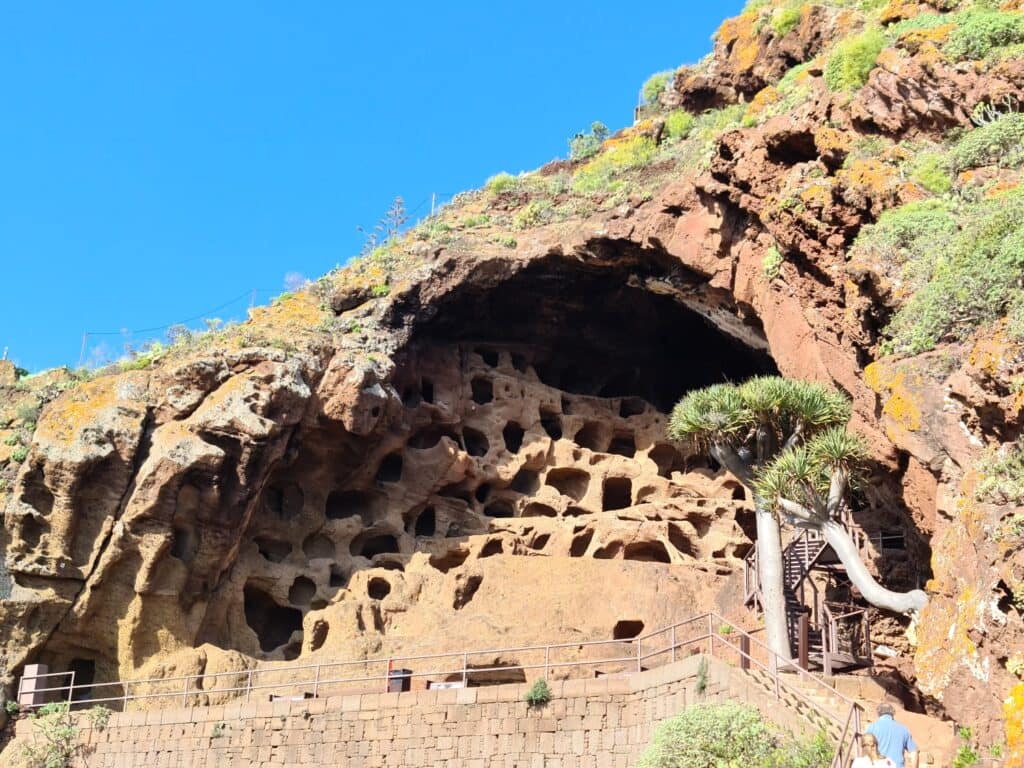After breakfast, we make our last cultural excursion to visit the Cenobio de Valerón in this day trip from Gáldar to Las Palmas. This fascinating archaeological site has nothing to do with a Monastery (Cenobio) as the name suggests. The Cenobio de Valerón is a unique pre-Hispanic settlement that consists of a series of artificial caves carved into the volcanic rock dating back to the 6th century AD.
The complex consists of around 350 individual caves that were used by the Guanche people to store grain, primarily wheat and barley. The caves are interconnected by a system of passages and walkways, creating a network of storage spaces. The design and construction of the Cenobio de Valerón are remarkable, showcasing the engineering skills of the indigenous group. The caves were strategically positioned to take advantage of the natural environment as the volcanic rock provides insulation, helping to maintain a cool and dry atmosphere inside the caves, essential for preserving the stored crops. The site’s location near fertile agricultural areas also facilitated the transportation of the harvested grains easily.

After enjoying this expedition from Gáldar to Las Palmas together it is time to prepare ourselves for dinner.
Las Palmas de Gan Canaria
Las Palmas de Gran Canaria, the capital city of Gran Canaria in the Canary Islands, is a captivating destination with its blend of natural beauty, rich history, and vibrant culture. Situated on the northeastern coast of Gran Canaria, Las Palmas benefits from a strategic location that has made it a hub for trade, tourism, and cultural exchange.
The city’s subtropical climate ensures mild temperatures year-round, making it an ideal destination for those seeking sun and relaxation. Its urban beaches, most notably Las Canteras Beach, stretch for kilometers along the coastline, offering opportunities for swimming, sunbathing, and water sports against a backdrop of stunning natural scenery.
Las Palmas boasts a rich history that dates back centuries. The Vegueta neighborhood, with its well-preserved colonial architecture, including the iconic Cathedral of Santa Ana and Casa de Colón (Columbus House), provides a glimpse into the city’s past as a key port during the Age of Exploration.





